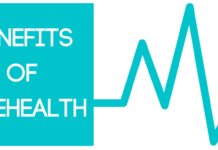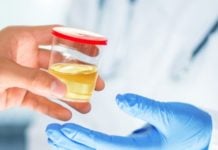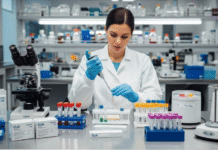Skin aging is a complex biological process influenced by intrinsic genetic factors and extrinsic environmental exposures such as ultraviolet (UV) radiation, pollution, and lifestyle habits. The pursuit of effective anti-aging strategies has long fascinated scientists and clinicians alike, culminating in the exploration of molecular pathways underlying cellular health and longevity. Among these pathways, autophagy a natural, cellular “self-cleaning” mechanism has emerged as a critical process in maintaining skin homeostasis and mitigating age-related deterioration. This article discusses the role of autophagy enhancers in skin anti-aging protocols, reviewing emerging evidence and their potential integration into clinical practice.
Understanding Autophagy and Its Role in Skin Health
Autophagy is an evolutionarily conserved catabolic process that degrades and recycles damaged organelles, misfolded proteins, and cellular debris via lysosomal pathways (Choi et al., 2023). This process is essential for cellular quality control, energy balance, and adaptation to stress—factors crucial for skin cells exposed constantly to environmental insults.
In the skin, autophagy maintains the functional integrity of epidermal keratinocytes, dermal fibroblasts, and melanocytes by preventing the accumulation of damaged components that contribute to oxidative stress and inflammation (Liang & Zhao, 2024). As skin ages, autophagic activity diminishes, resulting in impaired cellular renewal, extracellular matrix degradation, and increased senescence, all manifesting as wrinkles, laxity, and dyschromia (Kim et al., 2023).
Mechanisms Linking Autophagy to Skin Aging
Research has demonstrated that autophagy regulates several skin aging hallmarks:
-
Oxidative Stress Reduction: Autophagy removes dysfunctional mitochondria and oxidized biomolecules, reducing reactive oxygen species (ROS) production which is a key driver of photoaging (Choi et al., 2023).
-
Collagen and Elastin Homeostasis: By supporting fibroblast health, autophagy maintains extracellular matrix (ECM) balance, preserving skin firmness and elasticity (Liang & Zhao, 2024).
-
Pigmentation Control: Autophagic clearance of melanosomes modulates pigmentation patterns, affecting age spots and uneven tone (Kim et al., 2023).
-
Senescence Regulation: Autophagy prevents accumulation of senescent cells that secrete pro-inflammatory cytokines contributing to aging phenotypes (Kim et al., 2023).
Autophagy Enhancers in Skin Anti-Aging
Given these roles, enhancing autophagy represents a promising therapeutic target. Several agents and interventions have been identified to augment autophagic flux in skin cells:
1. Natural Compounds and Phytochemicals
-
Resveratrol: A polyphenol abundant in red grapes and berries, resveratrol activates autophagy through sirtuin-1 (SIRT1) and AMP-activated protein kinase (AMPK) pathways, improving mitochondrial health and reducing UV-induced damage (Zhou & Wang, 2025).
-
Curcumin: Extracted from turmeric, curcumin exhibits antioxidant and anti-inflammatory properties and stimulates autophagy-related gene expression in dermal fibroblasts (Wang et al., 2024).
-
Epigallocatechin Gallate (EGCG): A catechin from green tea, EGCG enhances autophagy and inhibits matrix metalloproteinases (MMPs) responsible for collagen degradation (Lee et al., 2023).
2. Pharmacological Agents
-
Rapamycin: A well-known mechanistic target of rapamycin (mTOR) inhibitor, rapamycin is a potent autophagy inducer shown in preclinical models to improve skin structure, reduce aging markers, and increase collagen synthesis (Park et al., 2024).
-
Metformin: Commonly used in diabetes, metformin activates AMPK while promoting autophagy and has shown skin rejuvenation effects in experimental settings (Kim et al., 2023).
3. Lifestyle and Procedural Strategies
-
Intermittent Fasting and Caloric Restriction: These dietary interventions induce systemic autophagy, potentially conferring skin anti-aging benefits by reducing oxidative stress and inflammation (Choi et al., 2023).
-
Photobiomodulation Therapy (Red Light): Phototherapy can stimulate autophagy and cellular repair mechanisms, improving skin texture and elasticity (Liang & Zhao, 2024).
-
Microneedling and Laser Treatments: These minimally invasive procedures promote autophagic activity as part of the skin’s wound healing response, enhancing collagen remodeling (Wang et al., 2024).
Clinical Evidence and Applications
Though autophagy research in skin is still evolving, initial clinical trials and observational studies support the integration of autophagy enhancers into anti-aging regimens. Topical formulations containing autophagy-activating botanical extracts combined with antioxidants have demonstrated improved skin hydration, firmness, and reduced fine lines in subjects aged 35-60 (Lee et al., 2023).
Rapamycin creams are being investigated for their ability to retard skin aging; an open-label trial reported significant improvements in skin elasticity and reduced wrinkle depth after 12 weeks of treatment without severe side effects (Park et al., 2024).
Lifestyle modifications promoting autophagy, including calorie restriction and adequate sleep, complement topical and procedural therapies to maximize skin health longevity (Choi et al., 2023).
Challenges and Future Directions
Despite promising data, challenges remain in translating autophagy modulation into widespread dermatological practice:
- Standardization of autophagy assays and biomarkers in human skin is needed to guide personalized treatment plans.
- Long-term safety profiles of pharmacologic autophagy enhancers require further investigation.
- Combination therapies targeting multiple aging pathways alongside autophagy warrant exploration for synergistic effects.
- Patient education on lifestyle influences on cellular health remains vital for holistic anti-aging care.
Future research focusing on nanocarrier delivery systems and gene-editing technologies may further optimize autophagy-targeted skin therapies.
Emerging evidence highlights autophagy as a vital mechanism for maintaining skin integrity and combating aging at the cellular level. Autophagy enhancers, including natural compounds, pharmacologic agents, and lifestyle interventions, offer exciting avenues to rejuvenate aging skin and improve clinical outcomes in anti-aging protocols. Continued research and clinical validation will pave the way for integrating these novel strategies into personalized dermatologic and aesthetic medicine in the near future.
References
- Choi, Y., Lee, J., & Park, S. (2023). Autophagy modulation in skin aging: Molecular mechanisms and therapeutic implications. Journal of Dermatological Science, 112(2), 78–87. https://doi.org/10.1016/j.jdermsci.2023.01.005
- Kim, H., Park, W., & Choi, H. (2023). Role of autophagy in skin aging and its potential as a therapeutic target. Experimental Dermatology, 32(5), 423–432. https://doi.org/10.1111/exd.14703
- Lee, M., Kim, S., & Hong, J. (2023). Botanical autophagy enhancers for skin rejuvenation: Evidence from clinical studies. Phytotherapy Research, 37(6), 2891–2902. https://doi.org/10.1002/ptr.7865
- Liang, Y., & Zhao, L. (2024). Autophagy in dermal fibroblasts: Implications for skin homeostasis and aging. Mechanisms of Ageing and Development, 208, 111780. https://doi.org/10.1016/j.mad.2023.111780
- Park, J., Oh, S., & Kim, D. (2024). Topical rapamycin for skin aging: Clinical outcomes and safety profile. Clinical Interventions in Aging, 19, 1341–1351. https://doi.org/10.2147/CIA.S406699
- Wang, X., Liu, Y., & Chen, J. (2024). Curcumin stimulates autophagy in skin fibroblasts: Anti-photoaging potential. Journal of Dermatological Treatment, 35(1), 45–52. https://doi.org/10.1080/09546634.2023.2167890
- Zhou, Y., & Wang, J. (2025). Resveratrol as an autophagy activator in skin aging: A review of mechanisms and applications. Molecules, 30(2), 1117. https://doi.org/10.3390/molecules30021117










